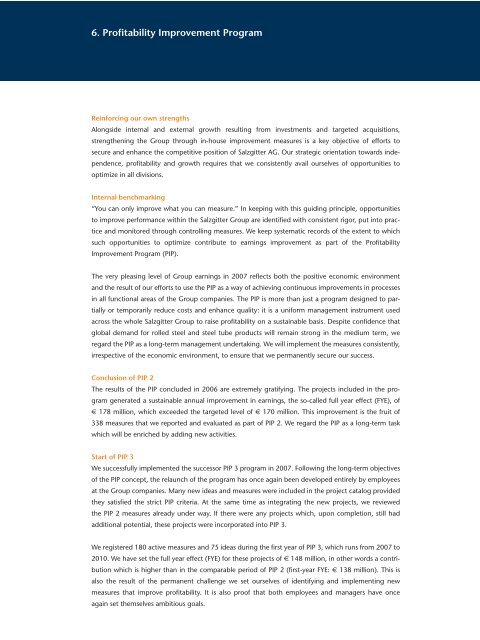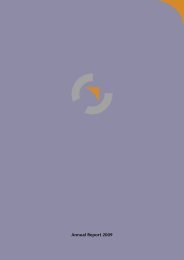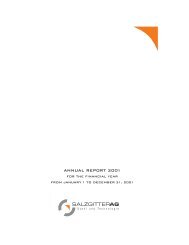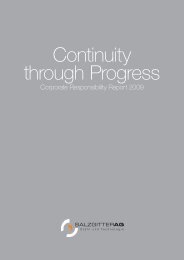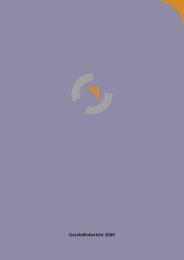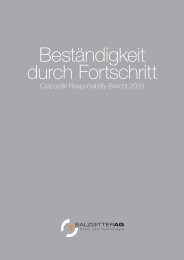Download - Salzgitter AG
Download - Salzgitter AG
Download - Salzgitter AG
Create successful ePaper yourself
Turn your PDF publications into a flip-book with our unique Google optimized e-Paper software.
6. Profitability Improvement Program<br />
Reinforcing our own strengths<br />
Alongside internal and external growth resulting from investments and targeted acquisitions,<br />
strengthening the Group through in-house improvement measures is a key objective of efforts to<br />
secure and enhance the competitive position of <strong>Salzgitter</strong> <strong>AG</strong>. Our strategic orientation towards independence,<br />
profitability and growth requires that we consistently avail ourselves of opportunities to<br />
optimize in all divisions.<br />
Internal benchmarking<br />
“You can only improve what you can measure.” In keeping with this guiding principle, opportunities<br />
to improve performance within the <strong>Salzgitter</strong> Group are identified with consistent rigor, put into practice<br />
and monitored through controlling measures. We keep systematic records of the extent to which<br />
such opportunities to optimize contribute to earnings improvement as part of the Profitability<br />
Improvement Program (PIP).<br />
The very pleasing level of Group earnings in 2007 reflects both the positive economic environment<br />
and the result of our efforts to use the PIP as a way of achieving continuous improvements in processes<br />
in all functional areas of the Group companies. The PIP is more than just a program designed to partially<br />
or temporarily reduce costs and enhance quality: it is a uniform management instrument used<br />
across the whole <strong>Salzgitter</strong> Group to raise profitability on a sustainable basis. Despite confidence that<br />
global demand for rolled steel and steel tube products will remain strong in the medium term, we<br />
regard the PIP as a long-term management undertaking. We will implement the measures consistently,<br />
irrespective of the economic environment, to ensure that we permanently secure our success.<br />
Conclusion of PIP 2<br />
The results of the PIP concluded in 2006 are extremely gratifying. The projects included in the program<br />
generated a sustainable annual improvement in earnings, the so-called full year effect (FYE), of<br />
€ 178 million, which exceeded the targeted level of € 170 million. This improvement is the fruit of<br />
338 measures that we reported and evaluated as part of PIP 2. We regard the PIP as a long-term task<br />
which will be enriched by adding new activities.<br />
Start of PIP 3<br />
We successfully implemented the successor PIP 3 program in 2007. Following the long-term objectives<br />
of the PIP concept, the relaunch of the program has once again been developed entirely by employees<br />
at the Group companies. Many new ideas and measures were included in the project catalog provided<br />
they satisfied the strict PIP criteria. At the same time as integrating the new projects, we reviewed<br />
the PIP 2 measures already under way. If there were any projects which, upon completion, still had<br />
additional potential, these projects were incorporated into PIP 3.<br />
We registered 180 active measures and 75 ideas during the first year of PIP 3, which runs from 2007 to<br />
2010. We have set the full year effect (FYE) for these projects of € 148 million, in other words a contribution<br />
which is higher than in the comparable period of PIP 2 (first-year FYE: € 138 million). This is<br />
also the result of the permanent challenge we set ourselves of identifying and implementing new<br />
measures that improve profitability. It is also proof that both employees and managers have once<br />
again set themselves ambitious goals.


